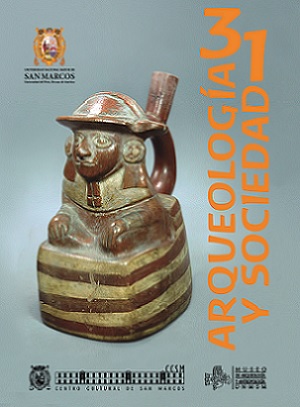UNA REVALUACIÓN Y APROXIMACIONES A LA INTERPRETACIÓN DEL CALENDARIO MÍTICO CEREMONIAL MOCHE BASADO EN LA ICONOGRAFÍA DE LOS TEMAS COMPLEJOS DE LA HUACA CAO VIEJO, COMPLEJO EL BRUJO, COSTA NORTE DEL PERÚ
DOI:
https://doi.org/10.15381/arqueolsoc.2016n31.e13294Keywords:
Complex Themes, iconographic, ceremonial calendarAbstract
The complex themes belong to a polychrome relief made from mud located in two pre-Hispanic temples that belong to Moche Culture in the northern coast of Peru dated circa VII century AD. This is an extraordinary symbolic and artistic representation found in the last XX century. This iconographic composition is the result of the strong change of attitude within the Moche society as an answer to the climate crisis. This new attitude implied the instauration of a new order to confront the chaos and the installation of a new mythical-ceremonial calendar represented in these two murals with complex themes. This article focuses on an iconographic study and on the use of etnohistorical sources to approach its importance.Downloads
Published
Issue
Section
License
Copyright (c) 2017 Régulo Franco Jordán

This work is licensed under a Creative Commons Attribution-NonCommercial-ShareAlike 4.0 International License.
THE AUTHORS RETAIN THEIR RIGHTS:
a. The authors retain their trademark and patent rights, and also on any process or procedure described in the article.
b. The authors retain the right to share, copy, distribute, perform and publicly communicate the article published in the Arqueología y Sociedad (for example, place it in an institutional repository or publish it in a book), with an acknowledgment of its initial publication in the Arqueología y Sociedad.
c. The authors retain the right to make a subsequent publication of their work, to use the article or any part of it (for example: a compilation of their works, notes for conferences, thesis, or for a book), provided that they indicate the source. of publication (authors of the work, journal, volume, number and date).






